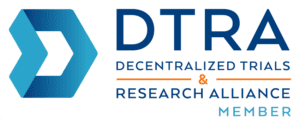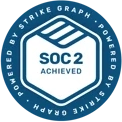The shift from traditional paper-based methods to electronic source data (eSource) platforms is reshaping data collection and management in clinical trials. In its Draft Electronic Source Data in Clinical Investigations Guidance Document, the FDA has recognized the growing importance of electronic systems in improving data integrity and compliance in clinical investigations. While there is an initial investment associated with implementing an eSource platform, the long-term cost savings and benefits are substantial. Significantly, the automation of data entry and monitoring processes cuts down on labor costs, while the ability to capture and validate data in real-time reduces the need for dual data entry and manual data reconciliation. Another key benefit of eSource is that it reduces the need for physical storage, paper, printing, and administrative tasks associated with traditional methods. In this blog, we’ll discuss how eSource improves clinical trials and explain the top five reasons clinical research sites are increasingly turning to eSource systems.
1. Streamlined Data Collection
eSource can significantly speed up and streamline the process of data collection, documentation, and signature acquisition. In traditional paper-based trials, gathering and processing data can be labor-intensive and time-consuming. Paper records often require multiple manual steps, including filing, data transcription, and transportation between departments, which slows down study timelines.
eSource, on the other hand, enables real-time data entry and allows remote access to documents. This eliminates the delays associated with paper-based systems. By removing the need for physical signatures and hard copies, eSource reduces bottlenecks in the approval process, allowing studies to start and progress more efficiently.
2. Improved Data Accuracy and Quality
According to the FDA, eSource improves the precision and quality of clinical data by allowing real-time capture and immediate validation of the information. eSource ensures that data is captured directly contemporaneously, at the point of care. This significantly reduces the need for manual data entry, minimizing transcription errors and resulting in much higher data accuracy compared to traditional paper-based systems, which are more susceptible to human error during the transcription process.
Additionally, the automated workflows in eSource provide built-in validation checks to detect errors during data entry. This leads to cleaner data. This also ensures that queries and discrepancies can be resolved immediately, resulting in improved data integrity.
3. Remote Monitoring Capabilities and Accessibility
As clinical trials increasingly involve multiple sites and decentralized elements, the ability to access and monitor trial data remotely is becoming a critical feature. eSource allows sponsors, contract research organizations (CROs), and regulatory bodies to review data in real-time from any location, eliminating the need for frequent on-site visits.
The remote monitoring capabilities of eSource reduce travel costs as well as the logistical challenges associated with on-site monitoring in traditional paper-based trials. This remote accessibility improves oversight, enabling faster identification and resolution of issues. Moreover, it also allows stakeholders to keep trials on track without geographical limitations.
4. Improved Compliance and Audit Trails
One of the key advantages of eSource is its ability to support compliance with regulatory standards such as FDA 21 CFR Part 11. This regulation requires electronic records and signatures to meet certain standards to be considered as trustworthy and reliable as paper-based documentation. For instance, eSource has built-in compliance features, including audit trails that automatically documents every change made to the data, including time stamps, user information, and the nature of the alteration. This functionality simplifies the monitoring process, as auditors can easily track data lineage and ensure adherence to protocols without extensive manual reviews.
This transparency is essential during regulatory inspections because it helps demonstrate that the data was handled appropriately and maintains its integrity from collection through submission. Furthermore, automated audit trails also streamline the process of providing documentation during an audit, significantly reducing the time and resources needed for compliance reviews.
5. Reduced Administrative Burden
Traditional data collection methods often result in significant administrative tasks, including managing paper documents, coordinating between multiple stakeholders, and ensuring that all data is accurately recorded. eSource platforms streamline these processes, allowing clinical trial teams to focus on more critical tasks. By automating routine administrative work, eSource cuts down on labor costs and enables coordinators to handle more studies. In one RealTime-eSource case study, one site increased its capacity from managing three studies per coordinator to five – seven studies—resulting in a significant 100% boost in productivity per coordinator. This means your site can do even more without adding additional staff. Importantly, this improves both time and resource management while maintaining high-quality trial management.
Final Thoughts
In summary, eSource offers numerous advantages over traditional paper-based methods in clinical trials. From enhanced data quality to improved regulatory compliance, faster study start-up, remote accessibility, and significant cost savings, eSource is becoming the preferred choice for many clinical research sites, site networks, Academic Medical Centers (AMCs), sponsors and CROs. With these systems, trials can operate at peak performance and maintain the highest standards of data integrity. Ultimately, eSource leads to better research, better business and better outcomes in clinical trials.
eSource in Clinical Trials: Frequently Asked Questions
Q: What is the initial cost of implementing an eSource platform?
A: The cost of implementing eSource can vary depending on the vendor, size of the trial, and specific customization needs. Typically, there is an upfront investment for licensing, setup, and potentially training, but these costs are often offset by long-term savings through reduced labor and administrative expenses.
Q: How does eSource integrate with existing systems like CTMS or EDC?
A: Most modern eSource systems are designed to integrate seamlessly with other clinical trial platforms like CTMS (Clinical Trial Management Systems) and EDC (Electronic Data Capture). This integration ensures data can flow smoothly between systems, reducing duplicate data entry and streamlining the trial process. Be sure to confirm compatibility with your current systems when evaluating eSource platforms.
Q: What training is required for sites to adopt eSource?
A: eSource typically requires training to ensure staff can use them effectively. Training sessions may include system navigation, data entry, monitoring, and troubleshooting. RealTime offers various comprehensive training programs that can be tailored to the specific needs of each site. The learning curve is generally manageable, with most staff becoming proficient in a short time.
Q: How secure is eSource in terms of protecting patient data?
A: RealTime-eSource follows stringent data security protocols, including encryption, role-based access controls, and compliance with standards like FDA 21 CFR Part 11. Additionally, our SOC 2 certification further demonstrates our commitment to protecting sensitive data. SOC 2 compliance ensures that our platform meets rigorous security, confidentiality, and privacy standards, giving sponsors and sites added confidence. The platform also includes audit trails and data protection features to ensure confidentiality throughout the entire trial process.
Q: Does eSource work for all trial phases and therapeutic areas?
A: Yes, eSource can be used across all phases of clinical trials (Phase I to IV) and in a wide range of therapeutic areas. The platform’s flexibility allows it to handle the specific requirements of different studies, whether it’s capturing complex data for early-phase research or managing large-scale trials in later phases.
Q: How does eSource handle regulatory compliance across different regions?
A: eSource is designed to meet the regulatory requirements of various regions, including the FDA, EMA, and other international health authorities. It includes built-in compliance features to ensure that all data is collected, stored, and managed in accordance with regional regulations. This makes it easier for global trials to maintain regulatory compliance across borders.
Q: What kind of support is available during and after implementation?
A: RealTime eClinical Solutions offers a range of professional services, including initial setup, user training, and ongoing technical support. RealTime also offers dedicated support teams to assist with troubleshooting and ensure that the platform runs smoothly. RealTime also offers continuous updates and system enhancements to keep your platform up to date.
Q: What are the specific cost savings related to eSource?
A: eSource reduces costs in several areas, including labor (due to automation of data entry and monitoring), paper storage and printing, and travel (with remote monitoring capabilities). Additionally, the system minimizes the need for manual data reconciliation and cuts down on study delays, resulting in overall operational cost reductions. While initial implementation involves costs, the long-term savings can be substantial.
Q: How does eSource improve patient experience during a clinical trial?
A: While eSource primarily benefits site and trial management, it can indirectly improve the patient experience by speeding up trial processes, reducing administrative burdens on staff, and allowing sites to focus more on patient care. Faster data capture and real-time validation help ensure patients spend less time in the clinic for administrative purposes.
Q: What are the potential challenges in transitioning from paper-based systems to eSource?
A: Some common challenges in transitioning to eSource include resistance to change, initial setup costs, and the learning curve for staff. However, with proper training and a phased implementation approach, these challenges can be mitigated. Sites may also need to adjust their workflows to take full advantage of eSource’s capabilities, but the long-term benefits often outweigh the initial hurdles.






